Ash summit yields action ideas
- Published
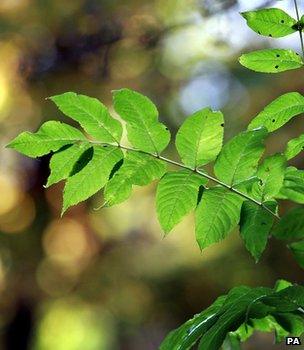
It is feared that it could already be too late to stop Chalara fraxinea becoming established in the UK
A summit on ash dieback has proposed focusing on newly planted trees and better surveillance to tackle the disease.
The summit, chaired by Environment Secretary Owen Paterson, brought tree health experts together with government and industry officials.
Dieback has been confirmed at 115 sites; woods in Norfolk, Kent, Suffolk and Essex are among the worst affected.
On Tuesday the disease was reported at seven sites in Scotland.
Some scientists warn the outbreak has the potential to devastate the UK's population of 80 million ash trees.
The summit considered the findings of a nationwide survey carried out by 500 Forestry Commission staff.
The data collected from 2,500 10km x 10km areas aimed to identify how far the disease has spread, and formed the basis of discussions on what steps need to be taken to deal with the dieback outbreak.
Dieback, caused by the Chalara fraxinea fungus, was first recorded in eastern Europe in 1992 and spread over two decades to infect most of the continent.
The key ideas to tackle Chalara identified at the summit, include:
Better awareness raising and information gathering, such as on leaf litter management
Keep surveying - develop partnerships to continue surveillance for disease and resistance and making use of volunteers
Focus action on newly planted trees - don't cut down mature trees.
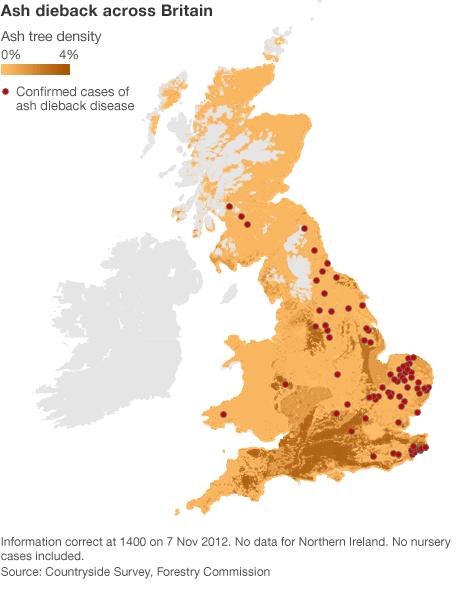
These, together with other proposals will be considered for possible inclusion in a Chalara action plan to be published on Friday 9 November.
The first confirmed case in the UK was recorded at a nursery in Buckinghamshire back in March 2012.
A ban on ash imports and the movement of trees from areas with confirmed cases of dieback came into force on 29 October, just days after government scientists confirmed that the disease had reached the UK's natural environment - at sites in East Anglia.
Researchers said the affected trees in woodlands in Norfolk and Suffolk were likely to have become infected as a result of coming into contact with Chalara fraxinea spores that had been blown over from mainland Europe.
The majority of confirmed cases have been recorded at nurseries or sites where young ash trees had been recently planted.
The Forestry Commission has issued guidance, external on how to identify the disease.
The Horticultural Trades Association (HTA) has been critical of the government, saying it first alerted officials of the threat back in 2009.
On Monday, a nursery forced to destroy 50,000 ash trees after the disease was found in its tree stock said it was considering taking legal action against the government for failing to block imports sooner.
The official spokesman for the prime minister said the issue of compensating affected horticultural businesses would be "dealt with ultimately by the courts".
A Defra spokesman told BBC News that the decision to convene a Cobra meeting last week and hold Wednesday's emergency summit on Chalara ash dieback was to show that the government wanted to take action "and is taking the matter very seriously".
Woodland Trust policy director Hilary Allison, who attended the summit, said the discovery of dieback in UK woodlands was very worrying.
"Unfortunately, it is often the case that until a tragedy such as ash dieback becomes a reality, it is very difficult to impress upon people the importance of protecting the UK's trees and the need to enforce stricter controls to prevent new pests and diseases entering the country," she told BBC News.
She added: "The Woodland Trust is pleased that Defra has been listening to its call for an emergency summit on ash dieback, but we want to stress that this situation only serves to highlight the consequences of leaving decisions affecting the security of our woodland to the 11th hour."
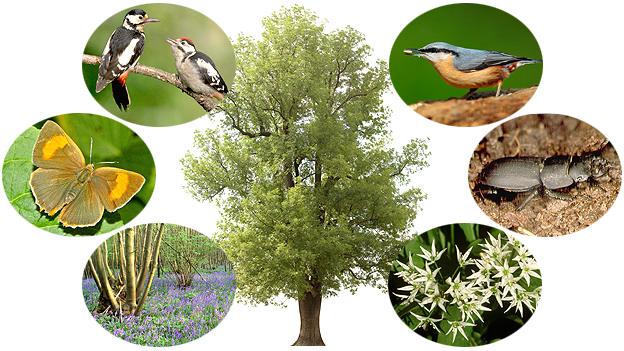
Britain's population of 80 million ash trees provides shelter and food for a wide range of wildlife, mostly birds and insects. The species' loosely-branched structure means plenty of light reaches the woodland floor, allowing a variety of plants to grow beneath them.
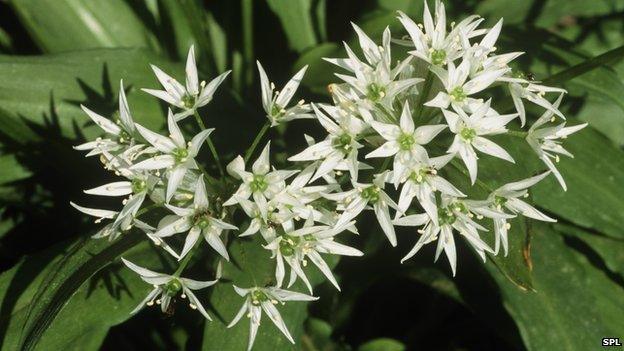
Wild garlic (ramsons) is among the plants that thrives beneath the ash tree. Others include dog's mercury, wood cranesbill, wood avens and hazel. Because ash bark is alkaline, the trees also support a wide range of lichens and mosses and attract snails.

Carpets of bluebells are often seen under and around ash trees. Norfolk’s Lower Wood, in Ashwellthorpe, famous for its spring display of bluebells, is among those areas where ash dieback disease has been discovered.
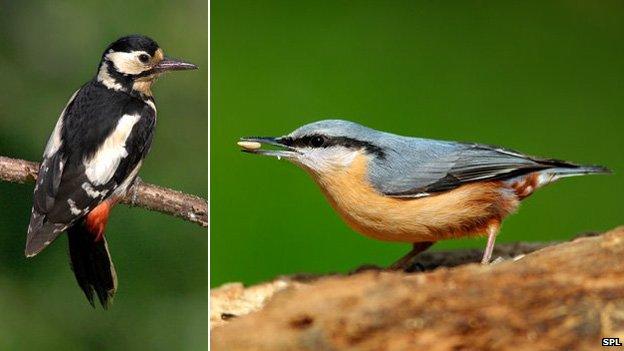
A rich ground layer beneath the ash means plenty of food for birds such as warblers, flycatchers and redstarts. Hole-nesting birds, such as owls, woodpeckers and the nuthatch, are also frequent visitors.

More than 100 species of insect are also known to live on ash. At least 60 of the rarest have an association with the tree – mostly beetles and flies. Because ash is very long-lived, it can also support specialist deadwood species, like the lesser stag beetle.
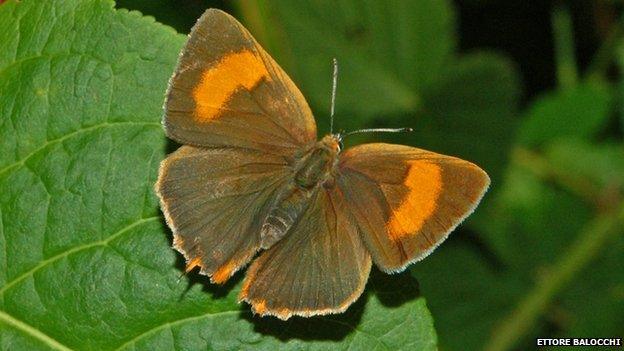
The brown hairstreak butterfly, the largest of the UK hairstreaks, is also a frequent user of the ash. They congregate high in the trees for breeding. Ash also supports a wide variety of moths. Source: The Wildlife Trusts